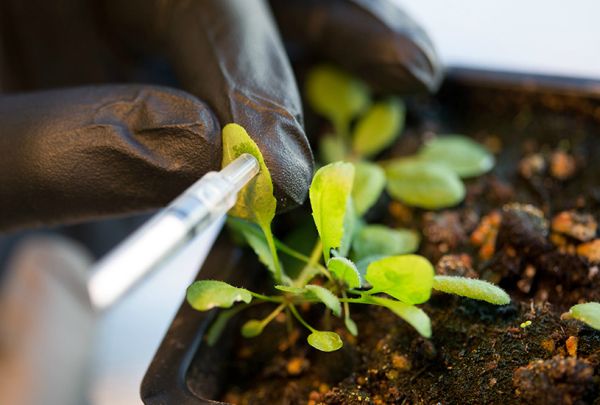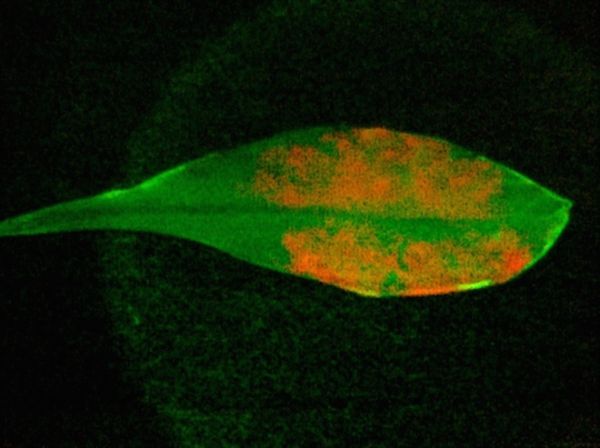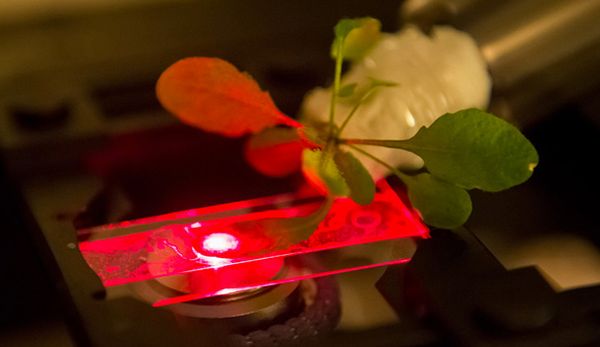MIT researchers hack living plant, turns into supercharged energy factory and sensor

Natural designs have always inspired Scientists to develop marvels of technology, and they still continue to do so. Plants are among the most favorite subjects of scientists and researchers for they have a perfect mechanism of processing sunlight, nutrients, carbon-dioxide absorption, and then to the production of oxygen to keep living creatures alive.
However, now the a team of researchers at MIT are upto something more remarkable invention aimed at enhancing the capabilities of the plants, and to convert them into energy generation hubs along with adoring your garden.
An emerging field called plant nanobionics is experimenting with nanoparticles and living plants to enhance the efficiency of photosynthesis in a plant with a prolonged life span. The success of a recent experiment at the MIT lab has almost made it certain that future plants would be much more than just what they are today. The nano-technology in combination with the plant’s natural chemical processes could be molded to a variety of ways to aid routine human operations, even detecting a minute quantity of explosives or drugs, which otherwise is untraceable due to loopholes in the present technological devices.
Michael Strano, the Carbon P. Dubbs Professor of Chemical Engineering and leader of the MIT research team say, “They repair themselves, they’re environmentally stable outside, they survive in harsh environments, and they provide their own power source and water distribution.”
How researchers made it possible
Chloroplast, the hub of photosynthesis, absorbs sunlight for the whole chemical process. At best, chloroplast in its natural condition hardly absorbs more than 10% of the sunlight. The scientists inserted carbon nanotubes, coated in negatively charged DNA, into the chloroplast to enhance the efficiency of chloroplast to absorb sunlight at higher frequencies and wavelengths, which were earlier inaccessible to it. With these prosthetic photoabsorbers, the plant absorbed 42 percent of more sunlight than it did without them. However, it’s not certain that how it effects the glucose production of the plant.

The chloroplast is extractable and can carry on the photosynthesis even when outside the plant. However, the exposure to oxygen and the presence of radical compounds destroy the chloroplast. To solve this trouble, to extend the life of the pigment, researchers embedded them with cerium oxide nanoparticles (nanoceria). These particles work as antioxidants and remove the oxygen radicals and other reactive molecules lethal to the pigments, thus, helping it to operate for a few more hours.
The experiment was conducted on a Arabidopsis thaliana plant and it revealed that the coated carbon nanotubes could also turn the plant into a chemical sensor, capable of detecting environmental pollutants like nitric oxide. Earlier, MIT has already proved it that carbon-nanotube sensors can successfully detect chemicals like hydrogen peroxide, the explosive TNT, and nerve gas sarin.
Another member of this research team, James Collins, a professor of biomedical engineering at Boston University says, “This is a marvelous demonstration of how nanotechnology can be coupled with synthetic biology to modify and enhance the function of living organisms — in this case, plants. The authors nicely show that self-assembling nanoparticles can be used to enhance the photosynthetic capacity of plants, as well as serve as plant-based biosensors and stress reducers.”
The potential in the field of plant nanobionics is endless according to the researchers, and the experiments are still in their infancy. In future, it’ll not be a surprised to see a beautiful garden, full of flowers with prolonged life span, not only embellishing your home but also producing energy, and work as sensors as well.
